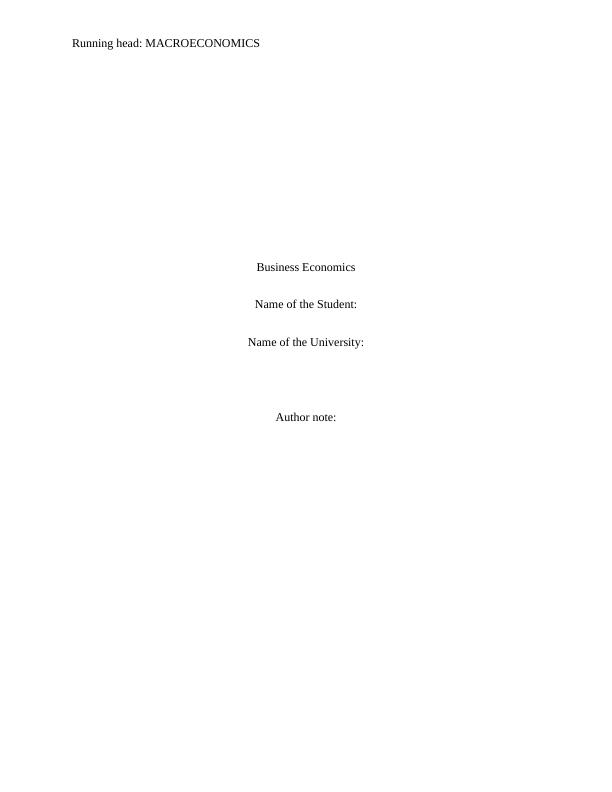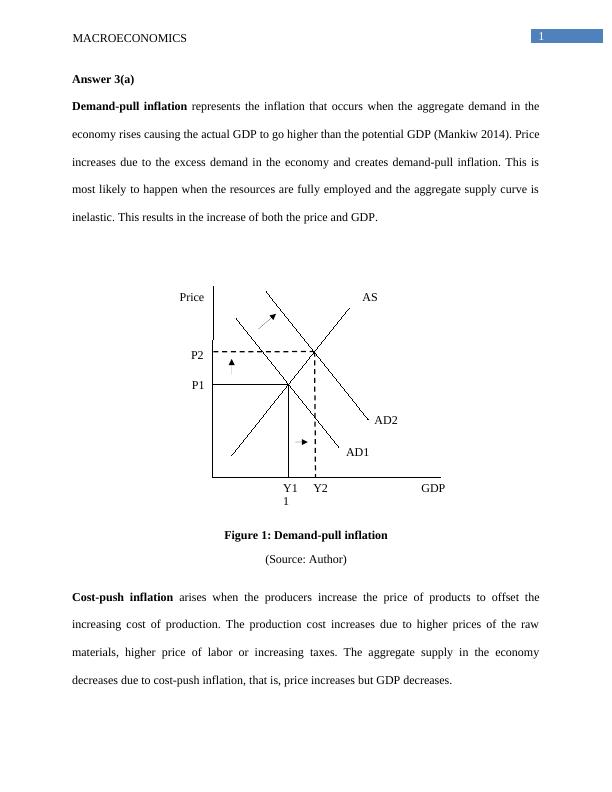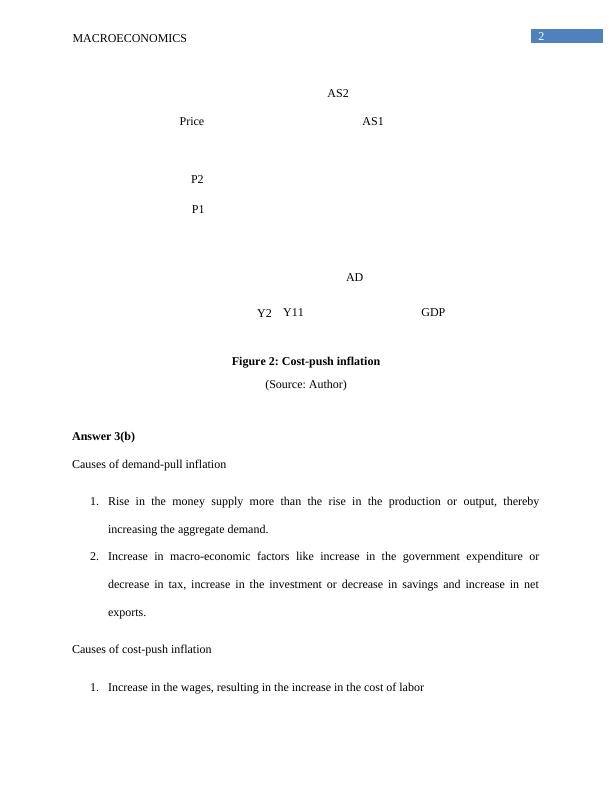Macroeconomics: Demand-Pull and Cost-Push Inflation, Keynesian-Monetarist Controversy, Impact on AD-AS, Banks and Money Creation
The assignment consists of questions related to inflation, Keynesian and monetarist views, and the impact of economic events on activity and price level.
11 Pages1471 Words471 Views
Added on 2023-06-11
About This Document
This article explains the concepts of demand-pull and cost-push inflation, Keynesian-Monetarist controversy, impact on AD-AS, and banks and money creation in macroeconomics. It also discusses the causes of inflation and the impact of various factors on the economy. The article is relevant for students studying macroeconomics and related courses.
Macroeconomics: Demand-Pull and Cost-Push Inflation, Keynesian-Monetarist Controversy, Impact on AD-AS, Banks and Money Creation
The assignment consists of questions related to inflation, Keynesian and monetarist views, and the impact of economic events on activity and price level.
Added on 2023-06-11
ShareRelated Documents
End of preview
Want to access all the pages? Upload your documents or become a member.
Macroeconomics Practice Questions and Answers
|8
|1387
|437
Causes and Effects of Demand-pull and Cost-push Inflation
|14
|2169
|279
Demand Pull and Cost Push Inflation, Reasons and Impact on Aggregate Demand and Supply
|6
|799
|412
Difference between Demand-Pull and Cost-Push Inflation
|16
|3283
|85
Assignment on Macro Economic
|13
|2805
|345
Macroeconomics: Assignment B
|11
|1813
|48




